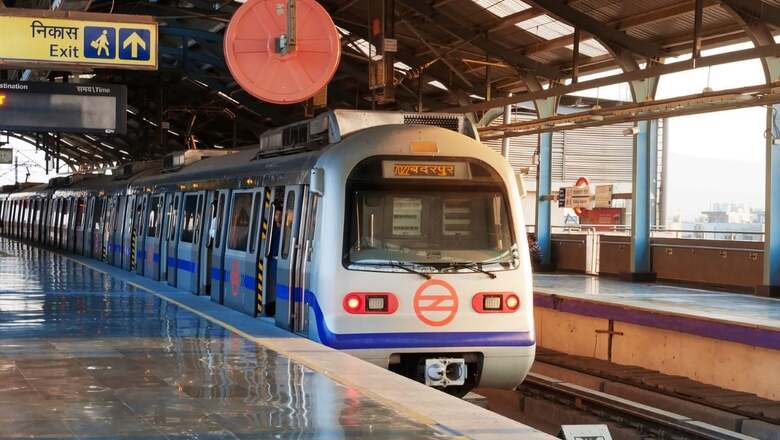
views
India will soon be home to the second-largest metro system in the world, ready to outpace Japan, Korea and the United States. Union Minister Hardeep Singh Puri had recently said: “There is 870 kilometres of operational metro and 1,040 kilometres more will be added in the coming times”, signalling the country’s leap in the sector.
Urban Mobility
As per the 2011 Census, approximately 32 per cent of India’s population lived in urban areas. By 2050, the share of Indian population living in urban areas is set to go up to over 50 per cent.
While this gives rise to doubts if Indian cities are ready to accommodate the huge spike in population, there is no doubt that the Narendra Modi government is investing in making urban India habitable for bigger populations through its Smart City mission.
Seamless urban mobility and public transportation is key to this push. Metro rail networks represent an efficient and sustainable mode of public transportation — especially in cities with population in millions. Metro rail offers citizens a chance to travel in a reliable, affordable and comfortable manner. It also reduces travel time, pollution and road congestion.
In Delhi, Metros have fundamentally transformed day-to-day travel for millions of commuters. About 51 lakh people use the Delhi Metro every day.
Building A Network
In 2014, only five Indian cities had Metro rails. Today, that number has gone up to 20. Similarly, in 2014, India had only 248 kilometres of Metro network which has gone up to 870 kilometres in nine years.
Metro rails are already operational in Delhi-NCR, Bengaluru, Hyderabad, Chennai, Ahmedabad, Jaipur, Kochi, Kanpur, Kolkata, Lucknow, Mumbai, Nagpur and Pune. They will also start soon in Agra, Bhopal, Indore, Meerut, Navi Mumbai, Patna and Surat.
Approximately 462 kilometres of Metro rail is currently under construction, while 372-kilometre-long routes have been approved. India’s cumulative Metro rail network will eventually be around 2,750 kilometres. Before 2014, the monthly average of metro lines being started was 0.68 km. It has now hit 5.6 km per month.
Central Power to City Lines
The tremendous task of establishing Metro networks needs appreciation. A lot of capital investment is involved, and construction also tends to disrupt urban life. The government has made sure that there is no shortage of funds for building the required rail networks.
In the previous fiscal (2022-23) alone, the Centre allocated about Rs 20,385 crore for 17 Metro rail and Regional Rapid Transit System (RRTS) across the country. In this year’s budget, the government has allocated Rs 19,518 crore.
It is important to note that in recent years, Union Ministry of Finance has been allocating budget for all Metro projects in India, instead of only for Delhi Metro. This even though transportation is actually a state subject.
Cash-strapped state governments are often reluctant to shell out money to build Metro networks. However, the Modi government has been stepping in to fund the projects, which will ultimately benefit ordinary citizens.
The Metro Rail Policy of 2017 provided a blueprint for fostering metro expansion across the nation. Under this framework, the Union government extends financial assistance based on project feasibility and resource availability.
The government is keen to take Delhi’s Metro revolution across several Indian cities. Given the pace at which work in going on, urban mobility in India’s cities will surely transform for the better.


















Comments
0 comment